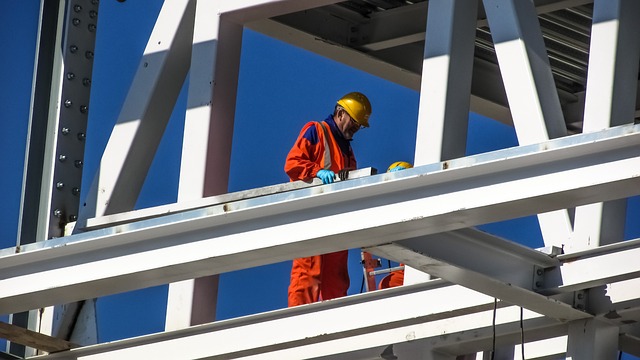Revolutionizing Utility Locating: Advanced Tools for Precise Underground Mapping
High-precision utility locating is revolutionizing infrastructure management by enabling accurate ut…….
Introduction
The intricate network of utilities beneath our feet is a testament to the ingenuity and progress of modern civilization. High-Precision Utility Locating (HPUL) represents a cutting-edge approach to managing, maintaining, and protecting this vital infrastructure. This article delves into the sophisticated technology and methodologies that ensure the safe and efficient operation of utility systems globally. We will explore the significance of HPUL, its impact on various sectors, and the advancements that are reshaping the landscape of utility management. By the end of this exploration, readers will have a comprehensive understanding of how HPUL is transforming industries and the challenges it faces in doing so.
Understanding High-Precision Utility Locating
High-Precision Utility Locating refers to the use of advanced technologies and techniques to accurately map, locate, and manage underground utility networks. These include electric power lines, gas pipelines, water and sewer systems, and telecommunication cables. HPUL integrates Global Positioning System (GPS) technology, ground-penetrating radar (GPR), electromagnetic locators, and other sophisticated equipment to provide precise spatial data of underground utilities. The historical context of HPUL begins with manual surveying and the evolution into computerized mapping systems, leading to today’s highly precise and automated solutions.
The core components of HPUL include:
HPUL’s significance lies in its ability to prevent service disruptions, reduce environmental impact, enhance public safety, and facilitate efficient planning and construction activities. It fits within the broader landscape of infrastructure management by providing a detailed view of underground assets, which is critical for maintenance, emergency response, and urban development.
Global Impact and Trends
The influence of HPUL is felt worldwide, as countries across all continents implement these technologies to improve utility management. Key trends shaping the trajectory of HPUL include the increasing adoption of smart city initiatives, the integration of Internet of Things (IoT) devices, and the growing emphasis on sustainable infrastructure. Different regions are affected in unique ways; for instance, densely populated urban areas like North America and Europe rely heavily on HPUL to navigate complex underground networks, while developing countries leverage these technologies to establish robust utility systems from the ground up.
Economic Considerations
HPUL’s economic impact is multifaceted. It contributes to market dynamics by enabling more efficient utility services, which can lead to cost savings and improved service delivery. Investment patterns in HPUL are driven by regulatory changes, technological advancements, and the demand for reliable infrastructure. The role of HPUL in economic systems is crucial, as it ensures the continuity of essential services and contributes to the overall resilience of critical infrastructure.
Technological Advancements
The field of HPUL has seen significant technological advancements, including:
These advancements have a tangible impact on the efficiency of utility operations and the precision of maintenance activities. The future potential of HPUL is promising, with ongoing research into artificial intelligence (AI) and machine learning (ML) applications that could further revolutionize the way we manage underground utilities.
Policy and Regulation
A robust policy and regulatory framework governs HPUL, ensuring that its deployment aligns with public safety, environmental protection, and economic interests. Key policies and legislative frameworks include:
These governance mechanisms influence the development of HPUL by setting standards for data accuracy, establishing protocols for utility mapping, and mandating best practices for infrastructure protection.
Challenges and Criticisms
HPUL faces several challenges, including:
To address these issues, stakeholders can invest in interdisciplinary collaboration, prioritize data standardization, and advocate for supportive policies. Additionally, fostering public-private partnerships and enhancing education and training programs will be instrumental in overcoming the current and emerging challenges of HPUL.
Case Studies
Several case studies exemplify the successful application of HPUL. For instance, the city of Los Angeles implemented a comprehensive HPUL system to manage its vast network of utilities, resulting in reduced service interruptions and more efficient utility planning. Another example is Singapore’s “OneNet for OneNorth” initiative, which leverages HPUL to monitor and manage its critical infrastructure within the OneNorth district. These case studies provide valuable insights into the practical application of HPUL and the lessons learned from its deployment.
Future Prospects
The future outlook for HPUL is one of continuous advancement and growing importance. With the integration of emerging technologies like 5G, HPUL will enable more responsive and efficient utility networks. The development of augmented reality (AR) applications could further enhance the precision and accessibility of underground utility data. As urbanization accelerates and the demand for reliable infrastructure increases, HPUL will play a pivotal role in meeting these demands while maintaining environmental sustainability and public safety.
Conclusion
HPUL represents a significant leap forward in the management of underground utilities. Its accurate mapping capabilities, technological advancements, and integration with broader infrastructure systems are transforming how we approach utility management. While challenges remain, the potential for HPUL to improve efficiency, reduce environmental impact, and enhance public safety is immense. As we move forward, it is imperative that stakeholders continue to invest in innovation, support policy frameworks that facilitate its adoption, and address the technological and regulatory hurdles that lie ahead. The future of HPUL is not only bright but also essential for the development of smart, sustainable, and resilient cities around the globe.

High-precision utility locating is revolutionizing infrastructure management by enabling accurate ut…….

Inaccurate utility locating can cause significant project delays, fines, and safety risks. High-prec…….

High-precision utility locating is transforming excavation safety and efficiency through cutting-edg…….

The evolution of utility locating has shifted from manual, error-prone methods to high-precision uti…….

Advanced technologies like GPR, electromagnetic induction, and laser scanning have revolutionized hi…….